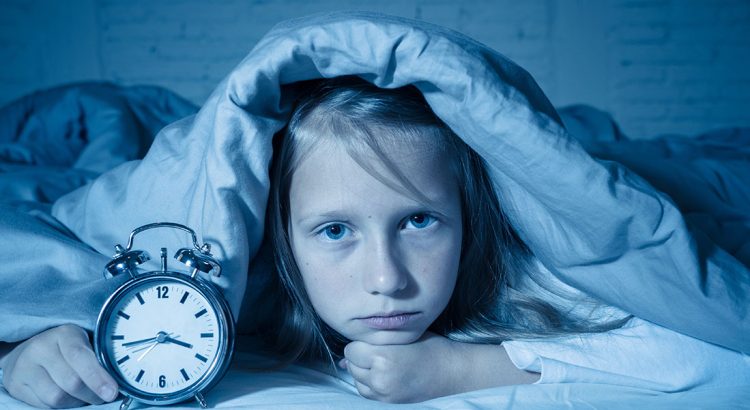Casal dels Infants – Childhood insomnia is a sleep disorder that is often overlooked, even though it does not only affect adults. According to UCLA Health, around 25 percent of children, even as early as six months old, can experience Behavioral Insomnia of Childhood (BIC). This condition is characterized by difficulty falling asleep or staying asleep due to certain habits, often involving the role of parents. If left untreated, childhood insomnia can persist into adulthood, affecting physical health, emotional well-being, and academic performance.
What Is Childhood Insomnia?
Insomnia is a sleep disorder characterized by difficulty falling asleep or maintaining sleep. In children, the main causes are often linked to inconsistent sleep routines or an uncomfortable sleep environment.
Parental behavior can also contribute to childhood insomnia, particularly through two main patterns classified under BIC:
- Sleep-onset association: the child can only fall asleep under specific conditions (e.g., being held, cuddled, or accompanied).
- Limit-setting: the child refuses or delays bedtime because parents are not firm in setting sleep rules.
Types of Behavioral Insomnia of Childhood (BIC)
According to the American Thoracic Society, BIC can be categorized into three main types:
- Sleep-onset association
Common in children under two years old. They need specific conditions, such as a favorite toy or a parent’s presence, to fall asleep. Without these, they struggle to go back to sleep when they wake up at night.
“Read More: Madonna Urges Pope Leo XIV to Visit Gaza, There’s No Time Left”
2. Limit-setting
Occurs in older children who often delay bedtime with excuses such as wanting to play, talk, or ask for something.
3. Mixed type
A combination of both patterns, dependence on certain conditions along with bedtime resistance.
Common Causes of Childhood Insomnia
Several factors can trigger insomnia in children, including:
- Inappropriate sleep schedules. Older children naturally need fewer hours of sleep, and forcing longer sleep times can actually make it harder for them to fall asleep.
- Sleep dependence on parents. Children who always fall asleep while being held or cuddled struggle to self-soothe and fall back asleep on their own.
- Bedtime resistance. Many children delay bedtime to continue playing or engaging in activities.
- Co-sleeping habits. Some children frequently move to their parents’ bedroom during the night.
Other contributing factors include stress, caffeine consumption, and underlying medical conditions.
The Impact of Childhood Insomnia
Sleep is crucial for a child’s growth and development. The American Academy of Pediatrics recommends the following daily sleep durations:
- 4-12 months: 12-16 hours (including naps)
- 1-2 years: 11-14 hours
- 3-5 years: 10-13 hours
- 6-12 years: 9-12 hours
- 13-18 years: 8-10 hours
When children don’t get enough sleep, they may become irritable, fussy, and have difficulty concentrating. School-aged children may show hyperactivity or declining academic performance. In the long run, chronic sleep deprivation can increase the risk of obesity, diabetes, cardiovascular problems, and mood disorders.
How to Manage Childhood Insomnia
Most cases of childhood insomnia can be managed without medication, primarily through practicing good sleep hygiene. The key is to help children develop independent sleep habits and maintain consistent bedtime routines.
Important steps include:
- Ensuring the bedroom is quiet, cool, and dark.
- Limiting caffeine, especially 4-6 hours before bedtime.
- Avoiding screens (phones, TV, or tablets) before sleep.
- Using the bed only for sleep, not for eating or playing.
- Maintaining a consistent bedtime and wake-up schedule.
Doctor-Recommended Methods for BIC
Doctors often suggest specific behavioral techniques to help manage BIC, such as:
- Unmodified extinction (“cry it out”)
The child is put to bed after a routine and left to fall asleep independently. Parents do not respond to crying unless there is an emergency.
2. Graduated extinction
The child is allowed to cry for set intervals before being checked on, such as every 2–5 minutes, with the intervals gradually lengthened.
3. Camping out
Parents stay in the child’s room but do not lie in bed with them or respond to crying, allowing the child to learn self-soothing.
4. Bedtime fading
Bedtime is temporarily delayed until the child falls asleep quickly, then gradually adjusted back to the desired bedtime.
5. Positive reinforcement
Offering small rewards, such as stickers or praise, when the child successfully sleeps independently through the night.
The Key to Success
The most important factor in overcoming childhood insomnia is consistency. All caregivers must agree on the sleep rules and avoid giving in to bedtime resistance. If insomnia persists or worsens, parents should consult a pediatrician or sleep specialist for further evaluation and treatment.
“Continue Reading: Ahead of the Alaska Summit, Kim Jong-un Reaffirms Full Support for Putin”



